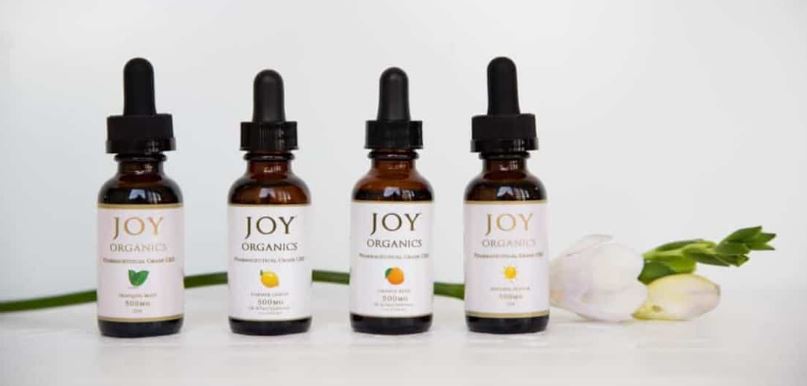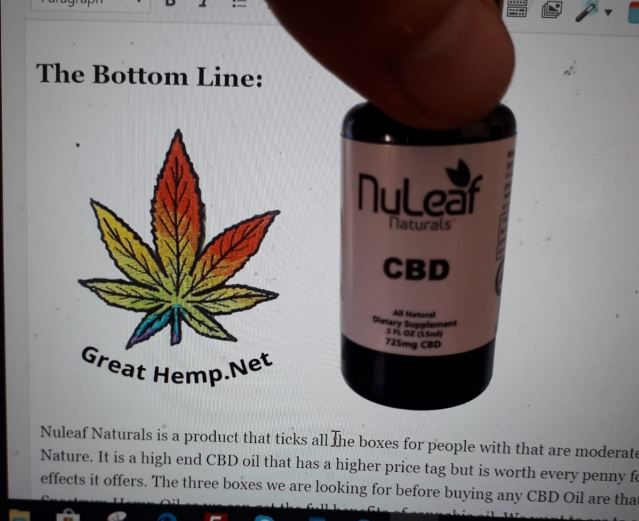The Endocannabinoid System 101 – Everything You Need To Know

In recent years, CBD’s popularity has skyrocketed as an alternative wellness treatment. As such, you might be questioning how it works, and why the sudden craze? Thanks to a combination of modern scientific research and relaxed cannabis laws, the beneficial effects of cannabinoids continue to emerge.
According to research, supplemental CBD improves mood, reduces inflammation, augments the power of your immune system, and treats pain. Its interaction with your endocannabinoid system even offers implications in serious illnesses such as multiple sclerosis, substance abuse, arthritis, Alzheimer’s disease, and cancer.
In order to fully understand how CBD and other cannabinoids work, we have to first discuss the endocannabinoid system as a whole.
What is your endocannabinoid system?
Your body constantly runs biological systems in the background to control everything from breathing to sleep cycles. Within these systems, cells, chemicals, and other molecules communicate with one another to make sure everything goes smoothly. This state of equilibrium is known as homeostasis.
The endocannabinoid system is one of those regulatory processes. Although only recently discovered, researchers note that it controls appetite, pain, cognition and nerve health, inflammation, and much more.
When was it discovered?
A team of scientists out of the St. Louis School of Medicine first uncovered receptor sites for cannabinoid compounds in mammalian brains back in 1988. Logically, they named them cannabinoid receptors, which are now commonly referred to as CB1 and CB2 receptors. These were primarily results of adding exogenous cannabinoids, such as THC, to rats within the lab.
In 1992, Dr. Lumir Hanus joined forces with one of the original scientists, Dr. William Devine, to discover anandamide and 2-arachidonoylglycerol (2-AG). These two compounds marked the first known endocannabinoids produced within the human body. From there, research opened up to find multiple other endocannabinoids and study the effects of phytocannabinoids such as THC and CBD.
After measuring the complex signaling pathways of these compounds and monitoring their reactions with G-coupled protein receptors, researchers named the wide-ranging network the endocannabinoid system.
The different functions of your endocannabinoid system
As previously discussed, your endocannabinoid system modulates tons of different biological pathways. The CB1 receptors find their home in your brain center around your limbic system. It’s here that your brain regulates moods, memories, and behaviors. Therefore, at optimal functioning levels, your endocannabinoid system rules homeostasis, keeping you from experiencing either a euphoric high or a depressive low.
Since it’s involved in almost everything, an underactive endocannabinoid system leads to stress, anxiety, and poor cognition. Other complications include elevated cortisol, low appetite, issues with digestion, and pain.
Clinical endocannabinoid system deficiency
In some cases, a medical professional determines an individual’s endocannabinoid levels as lower than required for general health. Clinical endocannabinoid system deficiency, or CECD, is a dangerous slope involved in multiple chronic illnesses.
Some of the conditions associated with CECD include:
- Huntington’s disease
- Autism
- Fibromyalgia
- Migraines
- Neuropathy
- Parkinson’s disease
- Irritable Bowel Syndrome
- Post-Traumatic Stress Disorder
- Multiple Sclerosis
Only a medical professional can clinically diagnose a true endocannabinoid deficiency. However, since it’s such a complex issue involving many illnesses, research is growing on treatment. As such, more discoveries are being made on how adding exogenous cannabinoids to your routine can make small improvement, even without a clinical diagnosis.
So exactly how important is the endocannabinoid system?
Even though it was discovered decades ago, the research on the system as a whole is still quite green. We do know that it mediates your reward system. We also know that optimizing the amount, flow, and interactions within the endocannabinoid system help keep us generally healthy.
Finally, it’s been confirmed that targeting this system with exogenous cannabinoids, such as THC and CBD, can improve mood, lower anxiety and depressive states, enhance cognition, manage appetite, and keep hormonal levels in balance. We’ll get into that a little more below. But for now, it’s safe to say that the endocannabinoid system is just as important as any other regulatory system within the body.
The different types of cannabinoids
Your body already contains its own endocannabinoids, such as the ones first discovered by those scientists in the nineties. These occur naturally within your endocannabinoid system, much like hormones or other neurotransmitters exist in other systems.
Phytocannabinoids come from plants. They’re basically the same as our endocannabinoids, but since humans are not plants, they vary slightly. These chemicals are found not only in cannabis, but other sources like kava, echinacea, rosemary, and black pepper. We consume these cannabinoids through eating, smoking, drinking, isolating them for creams, and more.
Finally, synthetic cannabinoids are made in a lab. Ever since the discovery of their potential, scientists turned to chemistry to generate synthetic versions for medicinal properties. Unfortunately, many synthetic cannabinoids cause health issues with long-term use.
So where does that leave us with CBD?
How CBD works with the endocannabinoid system
CBD is a phytocannabinoid, meaning it comes from plants – in this case cannabis. With a similar molecular structure to endocannabinoids, it stimulates the same response. That’s where the popularity of CBD comes in.
While much research focuses on two specific receptors in the brain and across the body – CB1 and CB2 – CBD actually doesn’t have as strong of an affinity for these receptors as other cannabinoids. It still interacts with them, though, as well as many other biological receptors. Let’s dive deeper in to what those receptors do, as well as how else CBD interacts with your endocannabinoid system.
What Are CBD Receptors?

All sorts of receptors exist within the human body, from mechanoreceptors for touch sensation, photoreceptors for vision, to chemoreceptors for various chemicals. CBD receptors are chemoreceptors that accept the “key” of cannabidiol in to their “locks” to open downstream pathways.
CBD inhibits the enzyme that breaks down anandamide, another endocannabinoid. With less breakdown, this endocannabinoid is free to exhibit its effects on CB receptors, which include pleasure sensations and memory. As such, CBD has a moderate effect on the endocannabinoid receptors. Full and broad-spectrum CBD oils contain other cannabinoids, thereby increasing the response in what is known as the entourage effect.
CB1 Receptors Function
The CB1 receptors exist within the brain in areas like the hippocampus, amygdala, and hypothalamus. Through their activation, multiple downstream benefits result, such as:
- Lower inflammation
- Anxiety reduction
- Lower blood pressure
- Improved myelin sheath formation
- Increased gene expression
As this receptor also modulates hormonal and neurotransmitter release, too much activation can interrupt your circadian rhythm, general cognitive function, and increased food intake. These are the side effects we traditionally associated with THC consumption and marijuana.
CB2 Receptors Function
Your CB2 receptors, on the other hand, exist primarily outside of the brain in other organs and cellular structures. Therefore, altering CB2 receptor function can affect pretty much anything. Studies have shown a malfunction plays a role in psychiatric illness, cardiovascular disease, reduced bone health. Activation of this receptor improves your immune system, modulates pain, and has implications in Alzheimer’s disease.
How does CBD exhibit its effects outside of these receptors?
As the endocannabinoid system reaches much further than these two CB receptors, here are a few other ways CBD targets sites to incite reactions within the body.
To suppress pain
CBD targets vanilloid and glycine receptors to reduce pain sensations. Glycine, a neurotransmitter and amino acid, can inhibit CNS activity to control pain at its source. Cannabidiol works these receptors to make them more active and therefore trigger greater effects of glycine.
It also connects with TRPV1 vanilloid receptors, which are key therapeutic targets in pain management. As thermoreceptors, they identify dangerous hot temperatures in inflammatory states. This means that, while they might not make you recoil when touching a hot stove, they can trigger pain from chronic or acute inflammatory responses that yield local, internal rises in temperature. CBD helps modulate the perception and tolerance of pain so that, even under minor inflammatory states, you feel a little better.
On dopamine, serotonin, GABA. and other mood regulators
CBD binds to dopamine receptors, mimicking the same qualities of the neurotransmitter itself. As such, it disinhibits dopaminergic synapses within the brain to play an antipsychotic role. Dopamine receptors are also involved in motivation, pleasure, learning, and other neuroendocrine activities.
High doses of cannabidiol have been shown to activate 5-HT receptors, more commonly known as serotonin receptors. Serotonin – aka the “happiness molecule” – can relieve depression.
On cognitive function
What’s most interesting about CBD’s interaction with neurotransmitters is that it can change the shape of their receptors. As an allosteric modulator, CBD manipulates the capacity of serotonin, GABA, CB1, and acetylcholine receptors. These changes can improve depressive states and alter cognitive learning.
On the immune system
CBD inhibits the reuptake of adenosine and antagonizes GPR55 receptors. These two interactions help CBD counteract immune problems and inflammation. Interacting with GPR55 receptors in particular prevents the growth of cancer cells and promotes bone health.
How to get the most benefits from CBD
In order to get the most out of your CBD and hemp oils, utilize broad or full-spectrum varieties. These versions contain more cannabinoids than CBD isolates, giving you a greater chance at targeting the endocannabinoid system as a whole.
They also contain terpenes, which are oils that offer distinct flavors and aromas. They exist in all kinds of plants, from the fruit you eat to the flowers you walk by and smell. The presence of terpenes in plants (and CBD) offers benefits for vision, inflammation, immune system, stress management, and more.
One caveat – full-spectrum CBD tends to come with THC, a cannabinoid that’s still illegal in many states. While hemp contains trace amounts of THC, it’s still a risk. Which brings us to our next point…
Is it legal to take CBD?
All hemp products, and the associated cannabinoids within, are federally legal. According to the 2018 Farm Bill, Congress stated that Cannabis sativa products with less than 0.3% THC content (based on dry weight) are allowed to be grown in certain amounts. Of course, agriculturists have to abide by strict regulatory rules. But as long as those are covered, hemp is legal to sell and use.
Interestingly, the marijuana version of Cannabis sativa, which contains a higher THC content by definition, is still a federal Schedule 1 drug. That makes it a controlled substance open to criminal prosecution. This would suggest that the only cannabinoid whose legality is in question is THC, not CBD.
Long story short – the compound cannabidiol is legal to use. Unless you live in a state that has decriminalized marijuana, get your CBD oils from hemp, and you’ll be safe.
What are the ways to take CBD?

Obviously, you have to actually get the CBD in to your body in order for it to take effect. The possibilities range from food and treats all the way to full spectrum oils and isolates. Here are a few basic ways to consume CBD for max benefits:
CBD gummies
My personal favorite because it calls back to childhood, CBD gummies are perfect for anyone with a sweet tooth. Just be careful not to eat them recklessly.
CBD absorbs slowly through the digestive tract, and gummies take a while to go into effect. Snack on a gummy or two to increase regular cannabidiol levels, much like you would take your daily multivitamin.
CBD oils
CBD oils come from natural oils found in hemp. As cannabidiol os a hydrophobic compound, suspending it in oils makes for the best release throughout the body. You can take oils in multiple ways – through sublingual droplets, capsules, topical applications, or even vapor. The most common form of CBD oil products are sublingual droplets. Take these drops regularly to build up your internal reservoir of cannabinoids.
CBD Tinctures
Tinctures are extracted from hemp through ethanol. As such, they tend to be much more concentrated and potent than other administration forms. They often come in various flavors, featuring the natural terpenes of the hemp plant. Since they’re based in alcohol, tinctures have a higher absorption rate than other methods.
Hemp Powders
Hemp powders have a relatively low concentration of CBD. However, they do come from ground hemp seeds and meal, meaning they feature a whole host of other benefits. Don’t forget – CBD isn’t the only cannabinoid that affects your endocannabinoid system. Utilizing the entire plant, including the seeds and fiber, packs more protein, good fats, and antioxidants than CBD isolate. If you want a healthy, plant-based, nutritional addition to smoothies or pancakes, hemp powder is the way to go.
Topical Creams
Put down the Icy Hot or ibuprofen cream and pick up some CBD. Yes, CBD topical creams can treat localized pain just as effectively. If you’re an athlete, have a sore knee, or suffer from chronic muscle pain, topical creams might be a nice addition.
Experts still recommend taking CBD internally, however, as absorption through the skin is limited. But if you can get your internal reserves up while putting special focus on where it hurts, you’ve got a better chance at relief.
Vape Pens and Flower
Finally, you can smoke CBD just like you would marijuana. Just don’t expect a high.
Vape pens heat up the oils within a cartridge so that they evaporate. Then, you can breathe them in safely. Different companies offer different flavors. My new personal favorite is Watermelon Mint, but you’ve got to try it yourself.
Or, you could go old school and light up some hemp flower in a bowl, joint, or other method. Be very careful, though, about your source. Yes, companies do sell hemp flower with little to no THC, but many others sell blends of both.
Whatever inhalation method you choose, know that affects come quickly. Breathing in CBD hits your lungs immediately, and therefore is transferred to your bloodstream almost instantly. From there, it’s free to find its way to the various receptors across the endocannabinoid system to take effect.
Now that you know about the ways to take CBD, who makes the best hemp products? Let’s take a look at some of the best CBD brands on the market
Best CBD Brands On The Market
Choosing your favorite CBD brand requires some shopping, especially if you’re new to it. Fortunately, we’ve looked across the internet to find some of the top brands out there. Now all you have to do is pick one.
CBDPure

CBDPure offers full-spectrum hemp oils to target the entire endocannabinoid system. By doing so, they reach both CB1 and CB2 receptors with their products, as well as other peripheral targets. Because they do use hemp, it’s unlikely there’s much THC in there – so don’t go to CBDPure looking for a high.
True to their name, they test each ingredient and product for quality before it hits the market. You can find results for each product on their website. Featuring pesticide levels, residual solvents, heavy metal levels, and presence of microorganisms, you’ll know exactly what is (and isn’t) in your CBD products.
Joy Organics

Joy Organics, on the other hand, utilizes broad spectrum CBD. The difference is that they ensure zero THC content while keeping other cannabinoids, terpenes, and flavonols. As a Colorado-based company, they get their products from some of the best farms in America. But just to be sure, they lab-test everything to rigorous standards.
This company has been in the game a while. Therefore, they provide multiple options for the most curious CBD consumer. Of course, there’s your basic CBD oils and tinctures. But they also have topical creams for local aches and pains, and gummies for a treat. Their line of CBD softgels includes melatonin and curcumin for sleep and inflammation, respectively. And they even have pet products.
NuLeaf Naturals

NuLeaf specializes in CBD oils with absolutely no additives. They only use organically-sourced ingredients for their products, and extract CBD through the cleanest method available – CO2 extraction.
Because they don’t contain additives, NuLeaf CBD relies on full-spectrum oils to pull out natural flavors and distinctions between strains. This means they feature trace elements, good fats, and vitamins as well. However, that doesn’t mean it’s not pure. They put all of their CBD oils through third-party testing to ensure compliance with federal regulations and purity for their customers. They also offer CBD oils for your pets, which is a big win if you ask me.
Conclusion
Overall, what we know about the endocannabinoid system is all very new. Unlike most other biological processes, we’ve only known it exists for a couple of decades. As laws begin to relax about cannabis use and more medical professionals invest in research, more beneficial information is sure to emerge.
The current evidence on CBDs interaction with the endocannabinoid system, however, suggests that its a valuable assessment to treat and manage health problems. There’s even stronger evidence that a combination of cannabinoids maintains regular homeostasis.
To learn more, check out this TedTalk from Dr. Ruth Ross on the endocannabinoid system and CBD. If you’re already sold, head over to your favorite hemp store and get started.

Jessica Rosslee is a former journalist that has dedicated her writing skills and passion for communication to the cannabis industry. Jessica has spent her life in the field of wellness and communication, committed to allowing people access to accurate health and wellness information.
As a freelance cannabis writer, Jessica is passionate about free-flowing education for the public and the destigmatization of cannabis.



